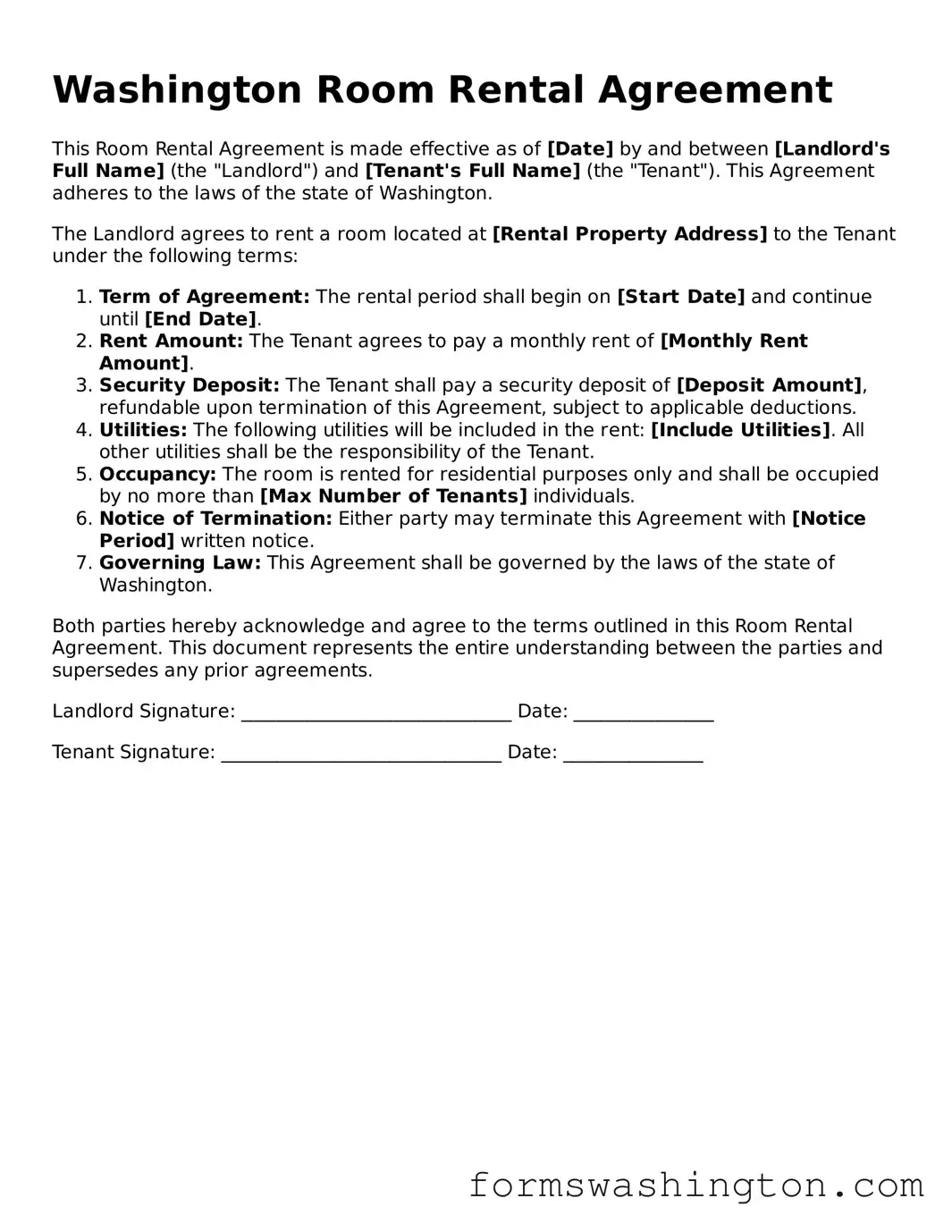The Washington Room Rental Agreement form serves as a crucial document for individuals or entities looking to rent a room in Washington State. This agreement outlines the rights and responsibilities of both the landlord and the tenant, ensuring a clear understanding of the terms involved in the rental process. Key aspects of the form include details such as the rental period, the amount of rent due, and the security deposit requirements. Additionally, it addresses maintenance responsibilities, rules regarding pets, and the process for terminating the agreement. By providing a structured framework, the form helps prevent misunderstandings and disputes, fostering a smoother rental experience for all parties involved. Understanding this agreement is essential for anyone considering entering into a rental arrangement in Washington, as it lays the groundwork for a successful tenancy.
